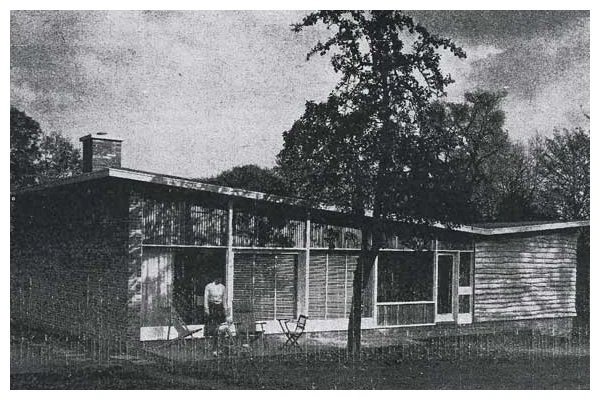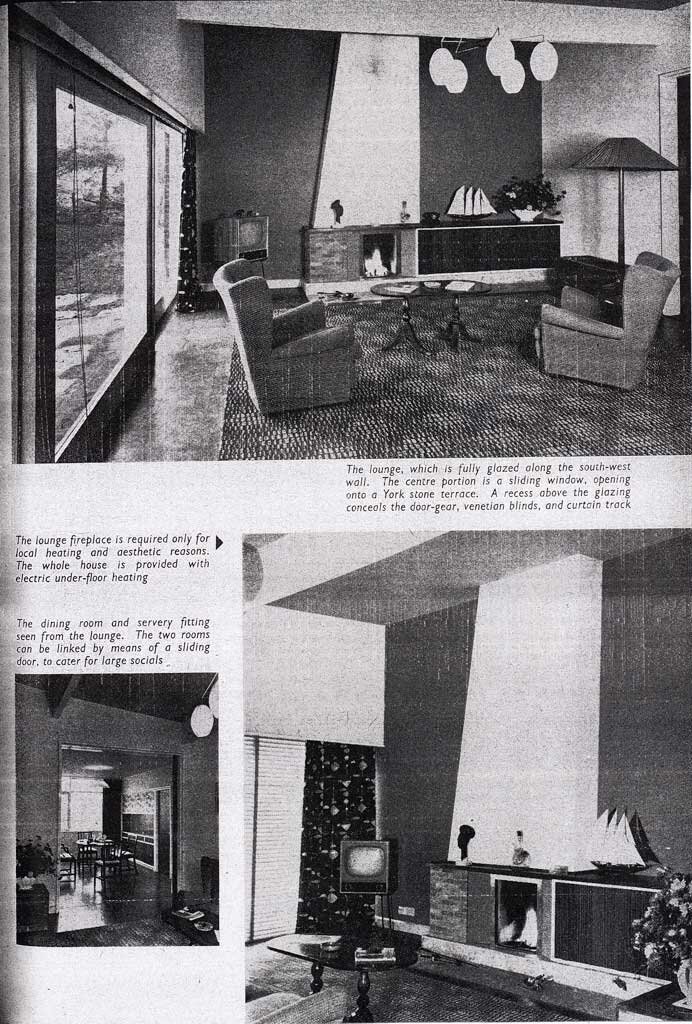Inspiration.1 - my childhood home
The first in an occasional series of posts about the things that inspire me.
The house I grew up in
I grew up in a modern(ist) home, designed by my architect father in 1956.
(I think it was of the modernist genre. I'm no architectural student, but this RIBA article seems to suggest it might have been).
My interest in modern design must be ingrained. Although I didn’t understand it as a child, the more I look back the more I can see why dad designed our home the way he did and the more I can see how it has influenced my approach to web design.
Modular and flexible
My childhood home was designed to be modular and flexible. Walls opened up for entertaining, or closed for quiet evenings in. Rooms were designed so that they could start as a brother’s bedroom and then change into a dressing room when the brother left home.
A modular, flexible approach means you can adapt with the times, stay up to date and continue to be useful.
I like that approach. One solution doesn’t work for ever. Times change. Technologies change. Trends change.
Looking back at my time in web design, I have noticed that every three to four years I have to change my approach; to learn new skills and discover new inspiration.
It may be due to the growth of mobile phones, or responsive websites, or learning a new piece of software which enables me to do something I couldn't do before.
And I love that. It keeps me fresh, motivated and enthusiastic.
As a sidenote, I'm looking at revamping my study using the Dieter Rams designed Vitsoe modular shelving. Their MD, Mark Adams who rescued the company in the 90's, says something very pertinent:
“At Vitsoe, rather than guessing what the future holds, we just make sure we can adapt to change”
Blending modern and traditional
Back to the house I grew up in.
My childhood home was built on an old kitchen garden of the neighbouring Vicarage. It was a modern home, built on an old piece of England. Built on the edge of the city in a semi-rural space.
This modern home was called The Orchard.
Part of the garden had fruit trees growing in a small bucolic idyll. Opposite was an atmospheric old wood where owls hooted at night and pigeons cooed in the day. At the bottom of the lane was The Sunken Church.
Despite its location, the house was modernist (as can be seen in the 1959 issue of Architect and Building News article below). At least when it was built.... it was originally built for two children. When the fourth came along (me), the house was more a family home with the clutter of four boys pushing the modernist details into the background.
I have alway been drawn to both the modern and traditional. There are very few things we do or create, that are truly original. Inspiration comes in many forms. From both old learnings and new discoveries. From both the city and the countryside.
New ideas come from picking things from different sources to create something that is different from before.
Space, light and simplicity
The focus of the house was a large lounge. One wall was glass.
The opposite wall had a large wooden sliding door which disappeared into a slot in the wall to open up onto the dining room making it an even bigger space.
As for simplicity, I didn't realise until recently, but the drains were hidden (rain water went to the centre of the roof and drained away via the basement). The essential services did not need to get in the way of the aesthetic simplicity of the house.
I have always liked large, light rooms. I like open spaces without clutter. It gives me room to breathe and think. It helps me focus and be more productive.
Similarly, I prefer websites without clutter. I like to see space. I like it to be easy to find what I want to know...
So that was my first post on inspiration. It’s a big one - the place I grew up in. I hope it won’t be long before I’m next inspired to write about what inspires me. I have a fairly long list already. They just need some words …




